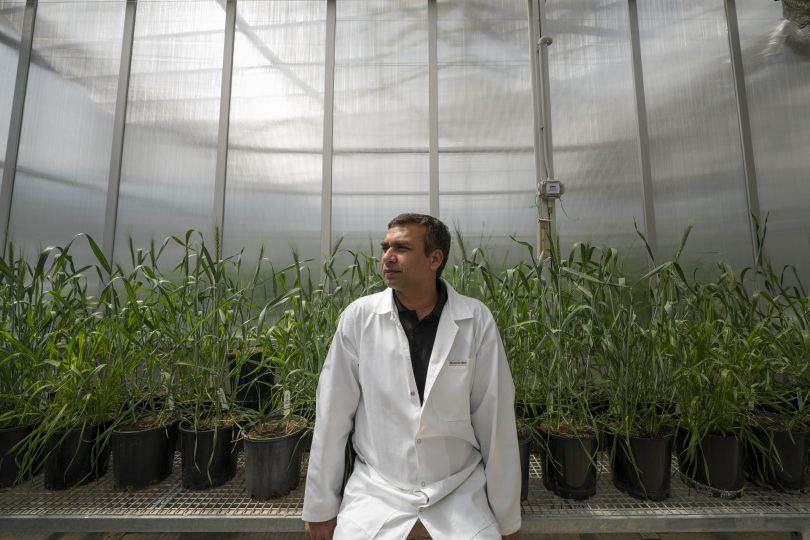
Dr Arun Yadav from the ANU Research School of Biology, ARC Centre of Excellence in Plant Energy Biology. Photo: Lannon Harley, ANU.
Researchers from Canberra have developed a new method to identify drought-resilient wheat quickly, cheaply and accurately.
The scientists say their research could help breeders develop more drought-resilient crops that can produce more food and more profit with less water.
“Our work may be instrumental for farmers to maximise food production in the face of increasingly severe drought,” said Dr Arun Yadav from the Research School of Biology and ARC Centre of Excellence in Plant Energy Biology at the Australian National University (ANU).
“Hardy crop plants that can maintain high yields under drought will help farmers produce more food reliably and maintain domestic and export markets for Australia.”
Led by researchers Dr Yadav and Dr Adam Carroll, the scientists from the ANU, ARC Centre of Excellence in Plant Energy Biology, and CSIRO Agriculture and Food said selecting wheat that can grow better during short- to medium-term drought is vital to help preserve food security around the world.
Dr Carroll said a simple test measured the relative abundance of four amino acids in wheat plants to predict their ability to maintain yield under drought much more accurately than current state-of-the-art methods.
“This test can be done precisely in greenhouses all-year-round, at a fraction of the cost of traditional field-based methods. Plus, it gives more accurate predictions,” he said.
Dr Yadav said the new method of identifying drought-resilient wheat crops will also help farming communities become less vulnerable to drought conditions and land-use pressures.
“Drought is a major agricultural challenge in Australia, affecting food production, farmers’ livelihoods and costing the government billions of dollars in relief efforts,” Dr Yadav said.
Professor Barry Pogson, a 2019 Eureka Prize winner and deputy director of the ARC Centre of Excellence in Plant Energy Biology at ANU, was also a member of the research team.
“If breeders are provided with 1000 wheat varieties to choose from, they can select the drought resilient lines through a simple assessment of the four amino acids we’ve identified,” Professor Barry Pogson said.
“The challenge is for us to show this technique does scale beyond the varieties we have tested to date.”
Dr Greg Rebetzke and Dr Gonzalo Estavillo from CSIRO Agriculture and Food conducted grain-yield evaluations under extensive field trials across the Australian wheat belt, which enabled the team to build a statistical model of the drought-tolerance predictor.
The study, published in the Journal of Experimental Botany, was funded by the Grains Research and Development Corporation, the ARC Centre of Excellence in Plant Energy Biology and the ARC Centre of Excellence in Translational Photosynthesis.
Original Article published by Michael Weaver on The RiotACT.








